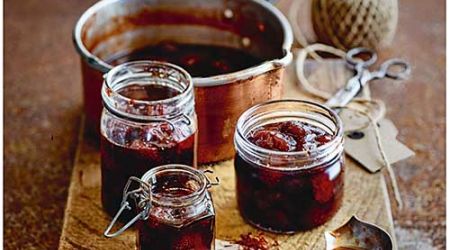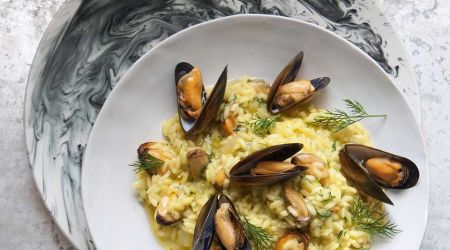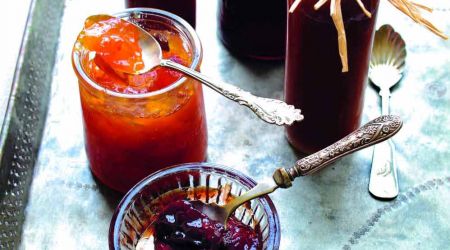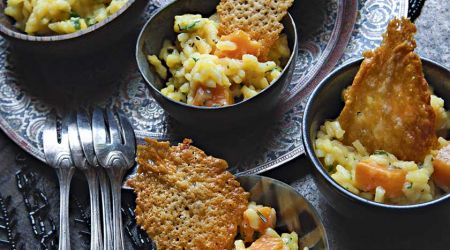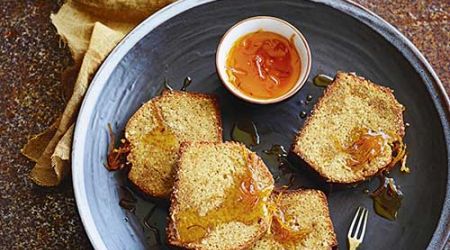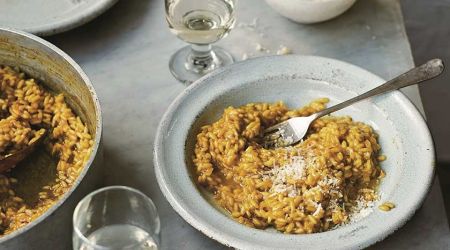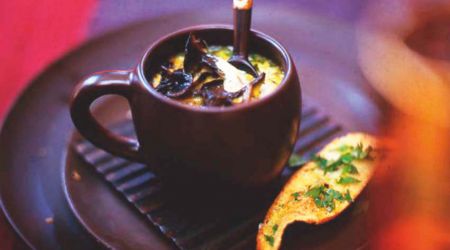Saffron
The world's most labour-intensive spice has been used as a seasoning and to colour food for over three millennia, reports Clarissa Hyman. Try it in our bang-up-to-date seasonal recipes, from a plateful of tasty savoury snack cakes to a bejewelled Persian rice dish.
What is it?
As costly per gram as gold, this precious, magical spice is the most expensive in the world. It is made from the stigmas of the saffron crocus (Crocus sativus), a cousin of the garden crocus, in a painstaking and lengthy process. Luckily, only a pinch is needed to flavour and colour any dish.
The origins
Saffron is believed to have first been cultivated in Asia Minor and was used by all the ancient civilisations of the Eastern Mediterranean, by the Egyptians and Romans in foods and wines, as a dye, in perfumes and as a drug. Taliouine in southern Morocco and the Ourika Valley, at the foot of the Atlas mountains, near Marrakech, remain important growing sites to this day. In Greek mythology Zeus, the king of the gods, had a bed of saffron, and the plant’s creation is also linked to the myth of Hermes the messenger. In Crete, in the Palace of Knossos, a 4,000-year-old fresco still depicts saffron harvesters.
By the seventh century the plant was known and grown in China, and three centuries later it was grown in Spain, probably introduced by the Arabs: the term comes from the Persian ‘safra’ and then from ‘za’faran’, the Arabic for ‘yellow’. Castile-La Mancha is still renowned for the quality of its saffron grown in arid plains similar to conditions in Iran and Kashmir.
In the Far East, the golden colour signifies enlightenment, illumination and wisdom, and was once used to dye the robes of Buddhist monks and to mark the breasts of Indian married women. In Tyre, the veils of new brides were dyed with saffron. In the 11th century saffron reached France and Germany, and two centuries later it was being grown in England, particularly in Essex, where the town of Saffron Walden was actually named after the aromatic. It is said to have been introduced by a pilgrim who hid a corm in his hollow staff.
It was always treated as an item of great value, used as a clothing dye as well as a cooking spice, and at one time in England, severe penalties, even death, awaited anyone who adulterated it. In the 17th century East Anglian ‘crokers’ exported huge amounts of saffron, and cultivation flourished also in the West Country, where saffron buns and breads are still popular today. English Saffron and Norfolk Saffron are among the enterprising English companies reviving saffron production. The stigmas are picked in the autumn, when the perennial bulbs sprout blue-violet, lily-shaped flowers. Each flower produces only three 2.5cm-long, thread-like red filaments that are so light, it takes around 20,000 to produce just 125g. Because of their fragility, they also have to be hand-gathered at just the right time of day. The deeper the colour, the better the quality. After they are picked, they are carefully dried in sealed containers in order to retain their potency.
Safflower is often known as ‘bastard saffron’ and sometimes sold as the real thing but cheaper: its colour is less vibrant, more orange than gold and red, and it will colour food but not flavour it.
Tasting notes
Saffron has a distinctive but highly penetrating aroma and taste, being both woody and musky, although too much can be cloying. For even flavour and colouring, soak the stigmas in a little hot water or warm milk to release the waxy coating and loosen the dye. Add both the saffron and the liquid to the dish you are using it in. Stored in a cool, dark space, and tightly wrapped to keep it from air, light and moisture, saffron will retain its potency for a couple of years.
Any benefits?
Saffron has been used since ancient times to treat depression, anxiety and hormonal imbalances. Its most significant active phytochemical is crocin, a carotenoid phytonutrient possessing anti-tumour and free-radical-fighting qualities. Rich in minerals and vitamins, especially potassium and vitamin C, it is also considered helpful in lowering blood pressure, calming the heartbeat and aiding digestion. Be aware, though, that if you take in too much, it can be toxic.
For centuries it was claimed that saffron delayed ageing: at the papal court in Avignon, saffron was added to many dishes. Even the bishops, it seems, wanted to delay meeting their maker.
Goes well with...
Saffron was once widely used in British cooking, often added to sauces, soups and dishes for Lent. Even now it adds a mild, spicy element and soft golden glow to teacakes and breads (see our recipes for an updated version). Saffron breads are also made in Sweden, especially on 13 December, the feast of Santa Lucia. It is truly an international spice: in France, Italy and Spain, it gives a distinctive character to fish and rice dishes such as bouillabaisse, Milanese risotto and paella, as well as to Middle Eastern pilaffs and tagines, and Indian biryanis and kheer desserts.
Quick tips
A little saffron gives oomph to nutty basmati and wild rice, or it can be added to a stir-fry for dramatic effect. Saffron potatoes make a fabulous salad, contrasting with brightly hued fresh peas. Saffron threads steeped in hot water with fresh ginger also make a refreshing herbal tea. Or add a pinch to a buttery sponge cake to balance the sugary sweetness or to give an intriguing extra dimension to custards and ice cream.
How to showcase it
Saffron can be a star ingredient of both savoury and sweet dishes. Ainsley Harriott suggests adding a layer of sophistication to a tomato tart with a filling of creamy saffron custard. Jason Atherton pairs roast cod with saffron oil. And Roopa Gulati elevates pears by poaching them in ginger wine, star anise, saffron and orange peel.
Anything else?
It is better to buy threads rather than ground saffron, as the latter may be adulterated with safflower, turmeric and synthetic dyes. Turmeric is also used as a saffron substitute but it has its own characteristic flavour. And some liqueurs, such as chartreuse, also contain saffron.
This article was taken from the May 2020 issue of Food and Travel.
To subscribe today, click here.

Recipes
Get Premium access to all the latest content online
Subscribe and view full print editions online... Subscribe

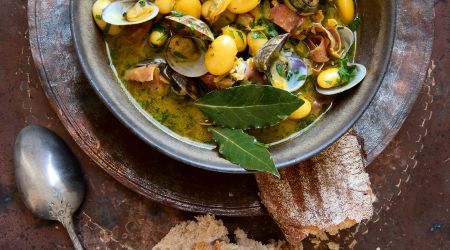

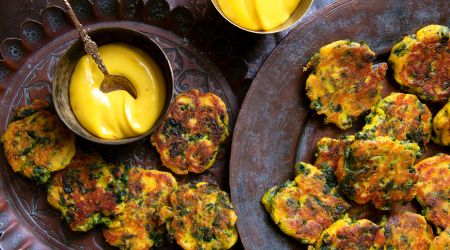


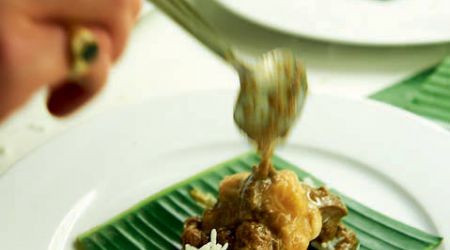
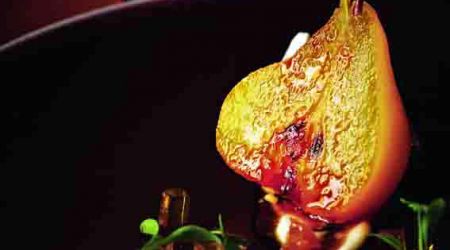
_Joanna_Yee_bc3f3685bee9310b32ee8e27b331ee38.jpg)
_Joanna_Yee_bc3f3685bee9310b32ee8e27b331ee38.jpg)
